Collective Molecular Activities of the Plant: Stephania Erecta
Plant ID: NPO26964
Plant Latin Name: Stephania Erecta
Taxonomy Genus: Stephania
Taxonomy Family: Menispermaceae
Plant External Links:
NCBI TaxonomyDB:
n.a.
Plant-of-the-World-Online:
n.a.
Overview of Ingredients
19 All known Ingredients in Total
Unique ingredients have been isolated from this plant.Plant-Ingredients Associations were manually curated from publications or collected from other databases.
3 Ingredients with Acceptable Bioavailablity
Unique ingredients exhibit acceptable human oral bioavailablity, according to the criteria of SwissADME [PMID: 28256516] and HobPre [PMID: 34991690]. The criteria details:SwissADME: six descriptors are used by SwissADME to evaluate the oral bioavailability of a natural product:
☑ LIPO(Lipophility): -0.7 < XLOGP3 < +5.0
☑ SIZE: 150g/mol < MW < 500g/mol
☑ POLAR(Polarity): 20Ų < TPSA < 130Ų
☑ INSOLU(Insolubility): -6 < Log S (ESOL) < 0
☑ INSATU(Insaturation): 0.25 < Fraction Csp3 < 1
☑ FLEX(Flexibility): 0 < Num. rotatable bonds < 9
If 6 descriptors of a natural plant satisfy the above rules, it will be labeled high HOB.
HobPre: A natural plant ingredient with HobPre score >0.5 is labeled high human oral availability (HOB)
15 Ingredients with experimental-derived Activity
Unique ingredients have activity data available.Ingredient Structrual Cards
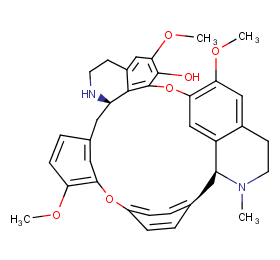
Ingredient ID: NPC82457

Ingredient ID: NPC76682
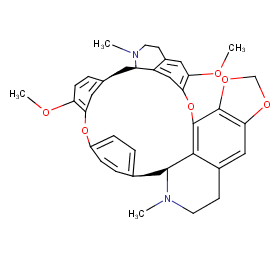
Ingredient ID: NPC73492
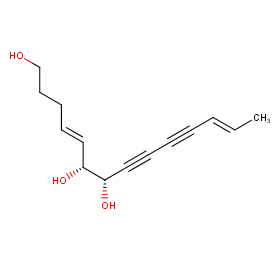
Ingredient ID: NPC67578
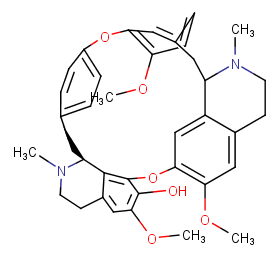
Ingredient ID: NPC66535
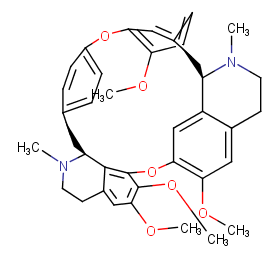
Ingredient ID: NPC63646
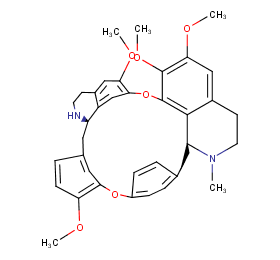
Ingredient ID: NPC475479
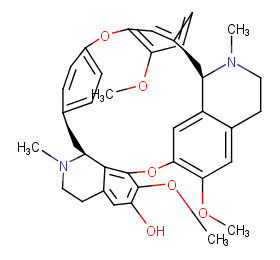
Ingredient ID: NPC311973

Ingredient ID: NPC295432
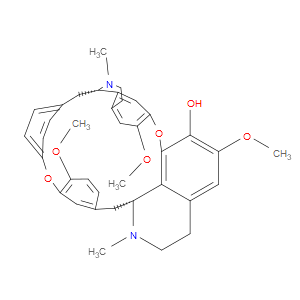
Ingredient ID: NPC290582
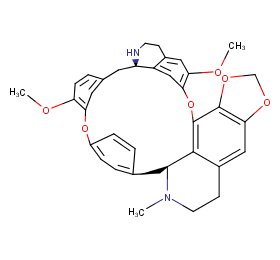
Ingredient ID: NPC281581
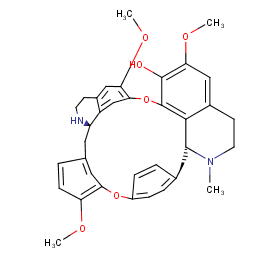
Ingredient ID: NPC274661
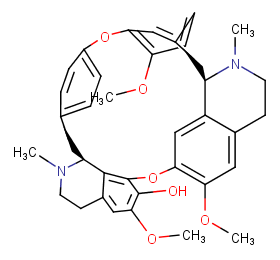
Ingredient ID: NPC271013
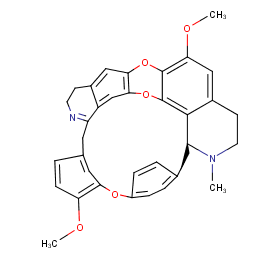
Ingredient ID: NPC249996
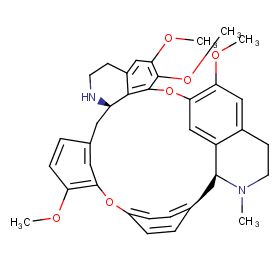
Ingredient ID: NPC243454
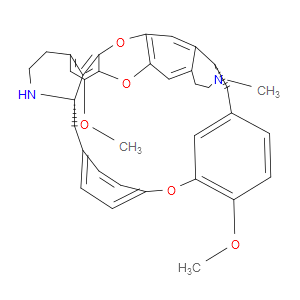
Ingredient ID: NPC239584
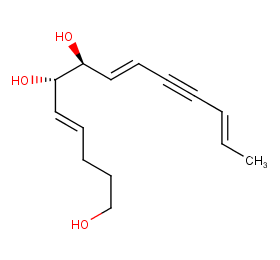
Ingredient ID: NPC153336
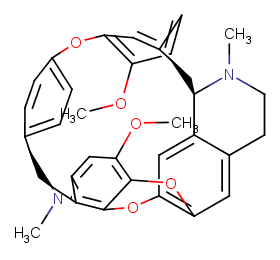
Ingredient ID: NPC12424
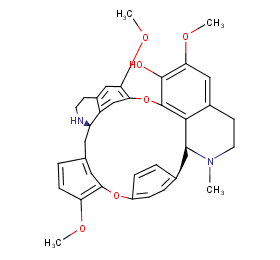
Ingredient ID: NPC11296
Classification of Human Proteins Collectively Targeted by the Plant
Detailed Information of Target Proteins
| Target Type | Protein Class | Gene ID | Protein Name | Uniprot ID | Target ChEMBL ID |
|---|---|---|---|---|---|
| Therapeutic Target | Other cytosolic protein | MAPT | Microtubule-associated protein tau | P10636 | CHEMBL1293224 |
Clinical trials associated with plant from natural product (NP) & plant level:
| Clinical trials type | Number of clinical trials | |
|---|---|---|
| 1 | ||
| NCT ID | Title | Condition | Form in clinical use | Associated by plant or compound |
|---|---|---|---|---|
| NCT05398705 | Study of Oral High/Low-dose Cepharanthine Compared With Placebo in Non Hospitalized Adults With COVID-19 | COVID-19 | Cepharanthine (NPC73492) |
❱❱❱ Associated Human Diseases and Detailed Association Evidence
How do we define the Plant-Targeted Human Disease Association?
Associated human diseases of an individual plant are summurized based on FOUR types of association evidence, these include:
❶ Association by Therapeutic Target: Bioactive protein targets of the plant were defined in "Molecular Targets" section, target-disease associations collected from TTD database were subsequently used to build the associations between the plant and its targeted human diseases.
❷ Association by Disease Gene Reversion: Plant and a specific disease will be associated when >= 1 plant target gene overlaped with disease's DEGs.
❸ Association by Clinical Trials of Plant: Plant and a specific disease will be associated when >= 1 clinical trial (the plant is the intervetion) can be matched in ClinicalTrials.gov database.
❹ Association by Clinical Trials of Plant Ingredients: Plant and a specific disease will be associated when >= 1 clinical trial (the plant ingredient is the intervetion) can be matched in ClinicalTrials.gov database.
Associated Disease of the Plant |
Association Type & Detailed Evidence |
|---|---|
Hepatocellular carcinoma of liverDisease Category: 02.NeoplasmsDisease ICD-11 Code: 2C12.02 |
MAPT,MAPT
|
Acute myeloid leukaemiaDisease Category: 02.NeoplasmsDisease ICD-11 Code: 2A60 |
MAPT
|
Mild neurocognitive disorderDisease Category: 06.Mental, behavioural or neurodevelopmental disordersDisease ICD-11 Code: 6D71 |
MAPT
|
Choreiform disorderDisease Category: 08.Diseases of the nervous systemDisease ICD-11 Code: 8A01 |
MAPT
|
ParkinsonismDisease Category: 08.Diseases of the nervous systemDisease ICD-11 Code: 8A00 |
MAPT
|
Alzheimer diseaseDisease Category: 08.Diseases of the nervous systemDisease ICD-11 Code: 8A20 |
MAPT
|
COVID-19Disease Category: 01.Certain infectious or parasitic diseasesDisease ICD-11 Code: 1D6Y |
NCT05398705
|
PheochromocytomaDisease Category: X.Extension CodesDisease ICD-11 Code: XH3854 |
MAPT
|
Malignant neoplasms of biliary tract, distal bile ductDisease Category: 02.NeoplasmsDisease ICD-11 Code: 2C15 |
MAPT
|
Malignant neoplasms of thymusDisease Category: 02.NeoplasmsDisease ICD-11 Code: 2C27 |
MAPT
|

